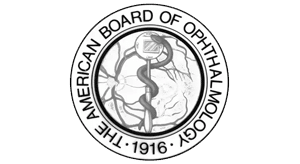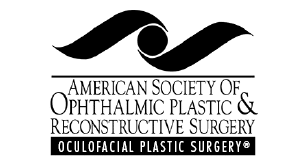Oculoplastic Blepharoplasty
Video Credit: American Academy of Opthamologists
Blepharoplasty addresses both functional (upper eyelid) and aesthetic patient concerns. Common reasons for eyelid surgery include sagging upper eyelid skin blocking vision, puffy eyelids, under-eye bags, and impaired field of vision. The surgery is typically an outpatient procedure using local anesthetic, sometimes with possible sedation.
Surgical approach varies by location:
Upper eyelid: an incision is made within the natural eyelid crease, excess skin is removed, fat is removed or repositioned, and muscles may be modified.
Lower eyelid: the incision is made below lower lash line or inside lower eyelid, excess skin is removed, fat is redistributed or removed, and the incision is closed with stitches or surgical adhesive.
After surgery it is important to protect your eyes from sun exposure and follow your opthomogists specific recover instructions
Potential Risks
– Bruising and swelling
– Severe dry eye
– Incision bleeding
– Infection
– Pain
– Sun sensitivity
– Difficulty closing your eyes
– Eyelid positioning issues
– Scarring
– Possible need for revision surgery
– Vision changes (temporary or permanent)
– Potential blindness
– Anesthesia complications
Alternative Options
– Upper eyelids: Consider eyebrow lift surgery
– Lower eyelids: Non-surgical skin treatments available
Important Notes
– Discuss all options with your ophthalmologist
– Ask questions about risks and benefits
– Review any concerns about your eyes or vision
– Follow all preoperative and postoperative instructions carefully
Video Transcript:
Your ophthalmologist has suggested an eyelid surgery called blepharoplasty. With this procedure, a surgeon removes or changes the position of tissue in the eyelids to help improve their function and appearance. Blepharoplasty can be done on either the upper or lower lids or both. Sometimes loose or sagging skin on the upper eyelid partially blocks vision. Eyelids can appear puffy or eyes can have bags under them. Blepharoplasty can help treat these conditions for a better field of vision and improved appearance.
Blepharoplasty is usually done as an outpatient procedure. You will be given a local anesthetic to numb the eyelids and possibly a sedative that makes you relax during the surgery. Blepharoplasty can improve eyelid function and aesthetic appearance through precise modifications to skin, fat, muscle and soft tissue. Scars are discreet, concealed within the natural eye creases or inside the eyelid.
For upper eyelid surgery, the surgeon creates an incision along the natural lid crease to remove excess skin. They may also remove muscle tissue or adjust fat positioning based on the procedure’s goals. Lower eyelid surgery typically involves an incision below the lash line or inside the eyelid, allowing the surgeon to remove excess skin and adjust fat distribution. Once complete, the surgeon closes all incisions using either stitches or surgical adhesive.
As you heal from blepharoplasty, it is very important to protect your eyes from the sun. Stay out of the sun as much as possible and use darkly tinted sunglasses until your eyelids have fully healed. Your ophthalmologist will tell you how long this is necessary.
As with any surgery, there are possible risks with blepharoplasty. Blepharoplasty risks can include unusual bruising or swelling after surgery, severe dry eye, bleeding from incisions, infection, pain, sensitivity to sun or bright light, difficulty closing the eyes, outward rolling of the eyelid, pulling down of the lower lid, scarring, need for adjustment or additional surgery, change in vision (either temporary or permanent), possible blindness, and problems from anesthesia.
You do not have to have blepharoplasty for your upper eyelids. It may be possible to have surgery to lift the eyebrows instead, improving your field of vision. For your lower eyelids, there are non-surgical options for improving the appearance of excess skin and fat. These may include some skin treatments.
Your ophthalmologist can explain why he or she recommends blepharoplasty for you. If you have any questions or concerns about the procedure, ask your ophthalmologist. He or she will be happy to help you understand the risks and benefits of blepharoplasty. Also, if you have any questions or concerns about your eyes or your vision in general, don’t hesitate to bring them up. Your ophthalmologist is committed to protecting your sight.





